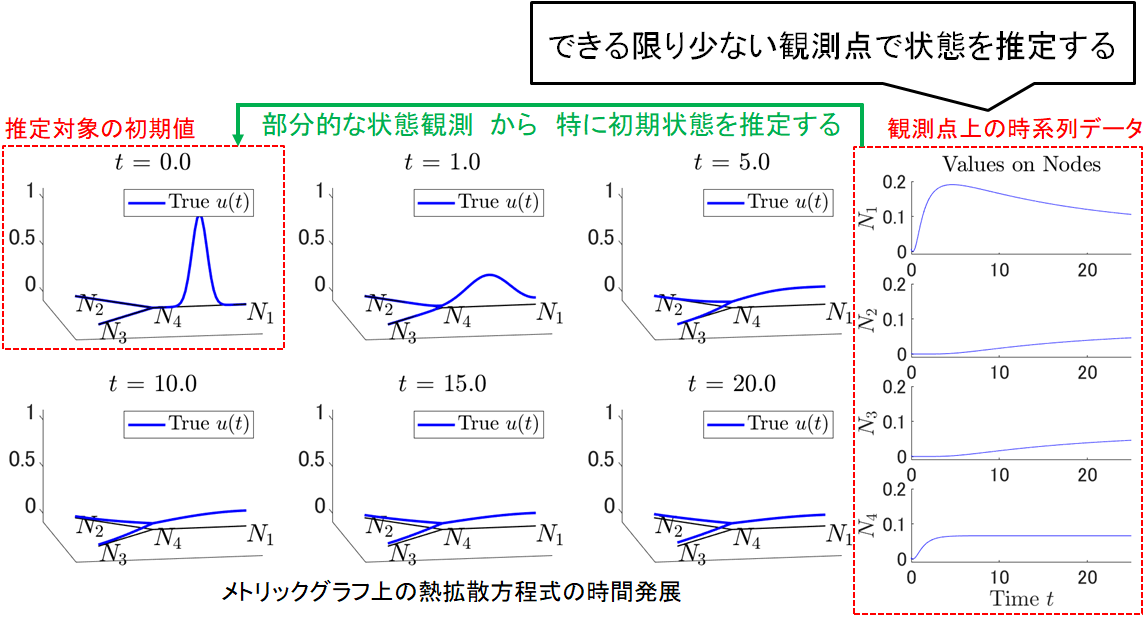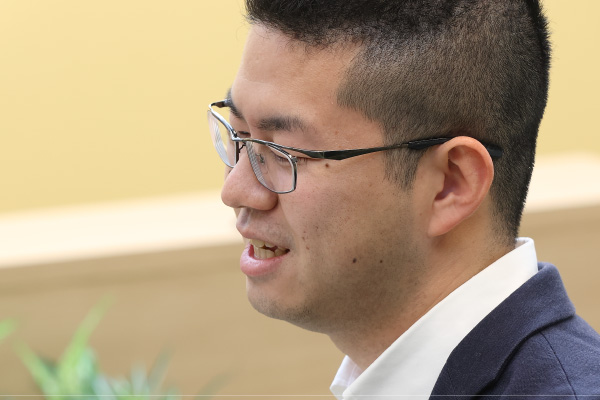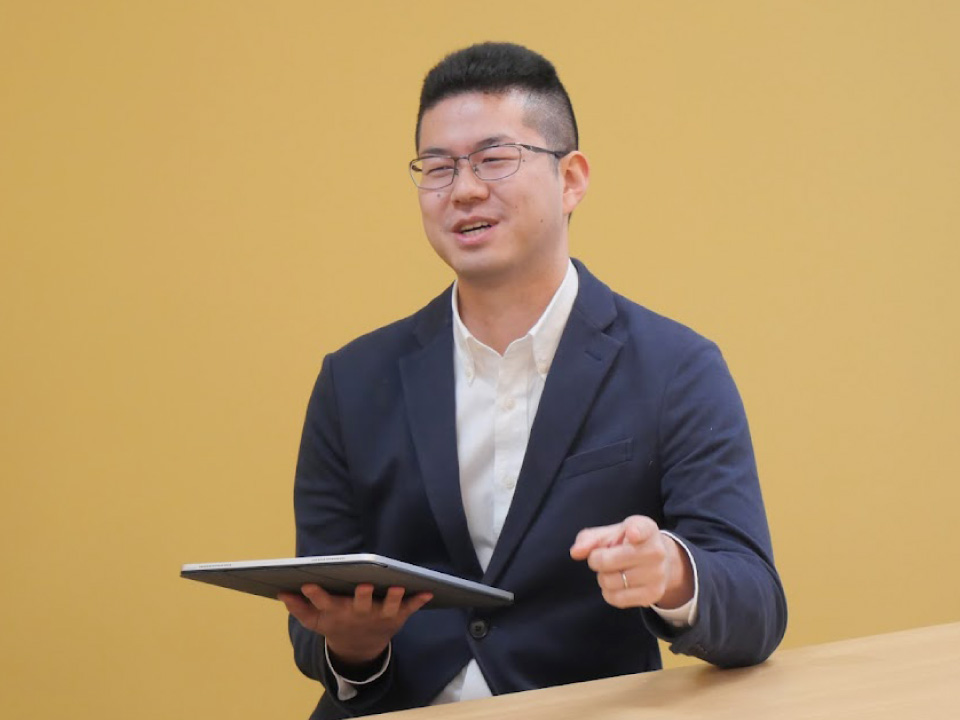Course of System Mathematics,
Department of Information Mathematics
Assistant Professor
Iwasaki Satoru
Responsibility: Iwasaki
This is Iwasaki, reviewing the interview article received from interviewer. I am very grateful that you have summarized my difficult-to-understand explanations to the best of your ability after reading the article. Unfortunately, there are discrepancies between my understanding and the research content, but that is solely due to my lack of communication skills. I can imagine the difficulties interviewer faced in structuring the interview article, and I sincerely apologize for that. I considered revising the article, but I hesitated to alter the piece that interviewer had prepared, so I decided to leave the interview article as it is and have it published separately with my responsibility for this part. Thank you very much for your understanding.
(I at least) had a very enjoyable conversation during the interview, but I realized that it is not enough for me to just enjoy it; it is important to focus on conveying information clearly to many people. I was able to learn something new from this valuable opportunity. Thank you very much for your support.
Below is the article summarized by interviewer; please enjoy it!
Please tell me about your research content.
For example, we observe the temperature at any one location indoors. As various conditions such as time and humidity change, the temperature also changes. If we can explain the relationship between each condition and the change in temperature with an equation, we can know the temperature at another location in the same room by substituting the conditions into the equation without observation.
In this way, I am attempting to elucidate equations that explain certain phenomena and to reconstruct phenomena that occur under the same conditions, which is the theme I am working on: "Construction of surrogate models based on reduction theory in partial differential equations." A surrogate model is a method of expressing a phenomenon with equations and conducting virtual simulations using AI, instead of performing physical simulations like experiments as in the past.
If a surrogate model can be constructed, it will be possible to "deduce the temperature at different locations in the same space from the equations" as mentioned at the beginning. Surrogate models can be applied, for example, to inspections of blast furnaces. Once a blast furnace is started, it cannot be stopped until it reaches the end of its life. Naturally, the inside of the blast furnace is filled with molten iron at extremely high temperatures, making it impossible for humans to inspect either the interior or the surroundings due to the high temperatures. Therefore, we observe the temperature changes in the areas where the blast furnace is operating normally and formulate equations. By using those equations, we can determine whether each area is operating normally just by knowing the temperature changes. If realized, it would eliminate the need for humans to perform dangerous tasks, as the internal state of the furnace could be automatically determined by simply placing temperature sensors at various locations in the furnace.
Similarly, if a surrogate model can be constructed, it can also be applied to the management of buried piping and the operation checks of fine electronic circuits within computers.
To improve the accuracy of surrogate models, we must cover as many conditions related to changes as possible and create equations that consider the changes in each condition. Even when "knowing the temperature at any location in a room," various conditions such as time, temperature, humidity, weather, and room volume are involved in creating the equations for constructing the surrogate model. If even one condition changes, the equation changes. I hope you can understand that constructing surrogate models is very challenging.
In the real world, it is almost impossible to construct a universal surrogate model because events do not occur under identical conditions. A surrogate model should not be seen as an alternative to physical simulations, but rather as something that enhances the overall accuracy of simulations when used alongside them, making it important to balance and utilize both.
I provided an applicable example for explanation, but what I am engaged in is purely theoretical research. Currently, I am not involved in efforts to create devices in collaboration with companies. However, I take pride in this research, which challenges the understanding of all phenomena in the world through mathematical equations and is filled with great potential. Even if it is difficult to apply at this moment, a future where it can be utilized will not come unless we advance the research. I believe that "you cannot hit a home run unless you step up to the plate," and I am dedicated to my research every day.

When did you start this research?
It was only recently that I moved to my current laboratory and started my research. Previously, I was engaged in research with an approach that was the opposite of what I am doing now. Instead of solving phenomena with equations, I was working on research that reproduces and applies phenomena using already known equations. While the direction of the approaches is completely opposite, both aim to "clarify the phenomena of the world through mathematical formulas." It can be done with just a pen and paper. Nowadays, research can be advanced with a PC or tablet. In that sense, it is the same in that research can be continuously thought about anytime and anywhere.
I mentioned that I moved laboratories, but my previous training room and my current laboratory happen to be next to each other within the facilities of The University of Osaka IST.
Although the research approaches have reversed, my commuting route and research environment have hardly changed.










